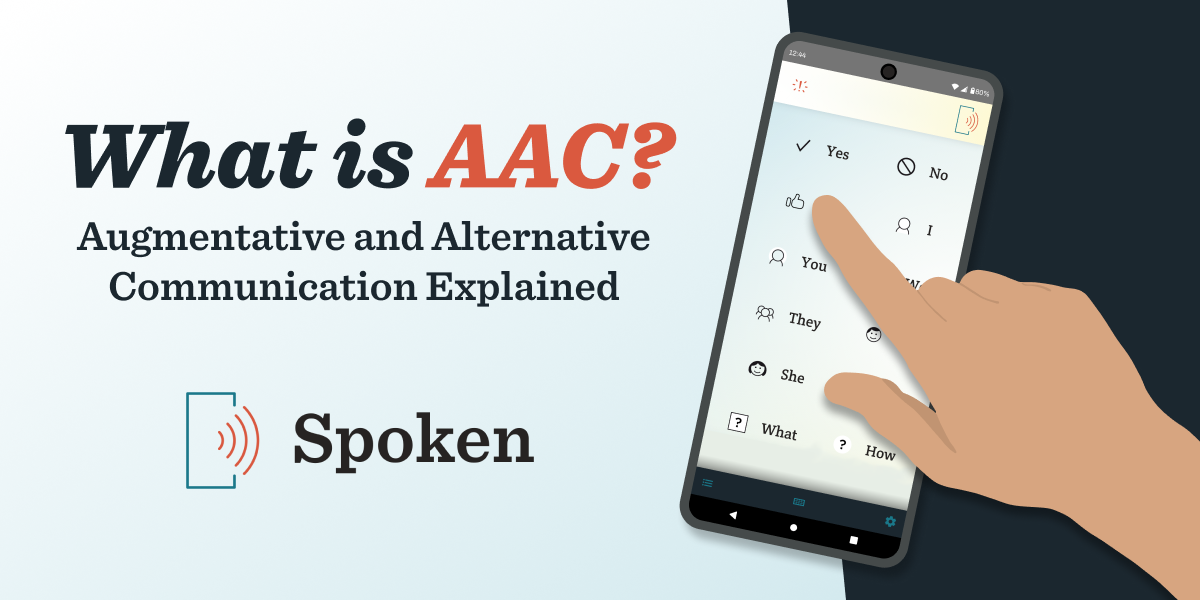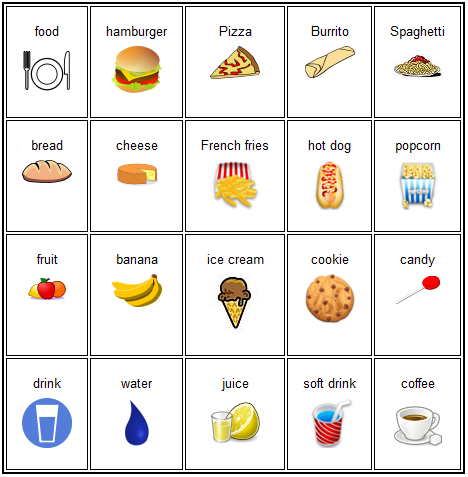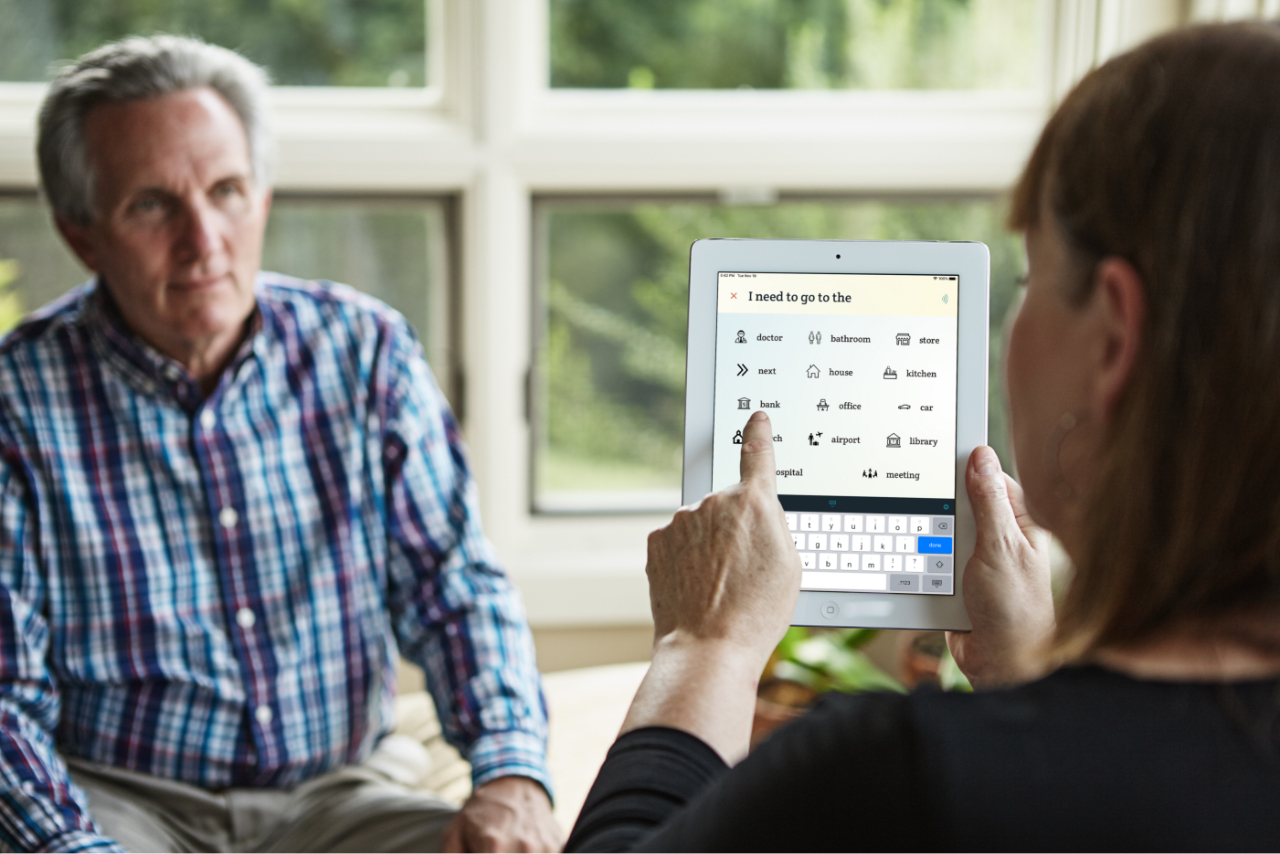What is AAC?

Augmentative and alternative communication, often shortened to AAC, refers to all the tools and techniques developed to help people with speech and language challenges communicate effectively, express themselves, and participate in social interactions. In this guide to AAC, we will explain exactly what it is, who it benefits, how it can improve their quality of life, and more.
AAC Explained
AAC Meaning
The term augmentative and alternative communication encompasses all tools, techniques, and strategies used to assist individuals who have trouble speaking. The American Speech-Language-Hearing Association, or ASHA, simply calls it “all of the ways that someone communicates besides talking.” AAC may be augmentative by supplementing speech. Other times, it may serve as an alternative to spoken language by replacing it entirely. Either way, you can think of it as assistive technology for aided communication. Just keep in mind that the “technology” in question can be as simple as pen and paper, or as advanced as a touchscreen running specialized software.
Why Do People Use AAC?
Augmentative and alternative communication is used by people with conditions and challenges that affect their capacity to communicate verbally. It can be helpful for people of all ages, not just children. AAC is commonly used by people diagnosed with aphasia or autism, but there are plenty of other diagnoses that lead to its use, like Parkinson’s and ALS. AAC may also be utilized by people who have temporarily lost their ability to speak due to something like an accident, illness, or surgery. During the COVID-19 pandemic, it was frequently used by people recovering from ventilator use.
People with speech and language challenges have much to gain by utilizing AAC:
- Enhanced Communication: AAC provides individuals with a means to express themselves, share their thoughts, feelings, and needs, and engage in meaningful conversations.
- Increased Independence: AAC empowers individuals to become more independent communicators, reducing their reliance on others to interpret or convey their messages.
- Social Inclusion: AAC improves social interactions by enabling individuals to actively take part in discussions, interact with peers, and build relationships.
- Academic and Vocational Success: AAC supports learning and educational progress, allowing individuals to better participate in classroom activities and pursue career opportunities.
Different Types of AAC
Although AAC does encompass a broad spectrum of tools and methods to assist people in communicating, it’s possible to split all of these into two main categories: unaided and aided AAC.
- Unaided AAC refers to forms of communication that do not require tools. This includes sign language, gestures, body language, and facial expressions.
- Aided AAC involves the use of additional equipment or devices. This can range from low-tech options, like pen and paper, to high-tech solutions like dedicated AAC devices and apps that feature speech synthesis.
A Closer Look at Aided AAC
The term AAC is most often used to refer to the aided form, making it worth exploring in more detail. Understanding the different types of aided AAC and their capabilities is crucial for selecting the right tools to meet each individual’s unique needs.
Communication boards: Besides pen and paper, the most ubiquitous form of aided AAC is the humble communication board. These are grids of words, often on laminated paper. The user simply points at a word or phrase on the board to communicate. These are often given to patients in hospitals. Unfortunately, they’re very limiting, as they can only feature a small number of words.

Letterboards: A letterboard or alphabet board is an alternative type of communication board that simply contains the entire alphabet. Users can spell out words one letter at a time by pointing. Unlike a keyboard, the letters are usually arranged from A-Z.
Picture Exchange Communication System (PECS): PECS is another common but simple form of aided AAC. It involves exchanging images with someone else to complete phrases. This system gives the user more freedom to initiate communication than a simple communication board.
Voice output communication aids (VOCAs) or speech-generating devices (SGDs): These are mid- to high-tech AAC options that produce spoken words in response to user input. The voice output may be synthesized speech or a prerecorded message, depending on the system. Many of these devices are based on communication boards, using grids of words with accompanying symbols as buttons. While some of them have fixed displays with a very limited number of words or phrases, others use dynamic screens that allow for more words than a physical communication board, as the terms can be scrolled through and organized into folders. Other speech-generating devices, designed for more advanced users, allow keyboard input. The keyboard can also be adaptive to make it more accessible for certain disabilities. For a more thorough breakdown of the different types of VOCAs, we suggest this article by Communication Matters, a nonprofit organization that advocates for AAC users.
AAC Apps: These days, many AAC users use apps on their existing smart devices (iPhone, iPad, Android, etc.). Technically speaking, these still count as VOCAs or SGDs. Not only is the option to use an existing device more convenient and discreet, but AAC apps are also more affordable than dedicated AAC devices in most cases.
The rise of these apps has paved the way for new innovations in communication technology by opening the gate for more developers. One prominent example is Spoken - Tap to Talk AAC, which has an AI-powered predictive text feature that learns from the user’s communication patterns, making it easier and faster to construct messages over time. The app can also adapt its vocabulary based on the user’s location, providing contextually relevant word suggestions. By integrating cutting-edge AI technology, Spoken exemplifies how modern AAC apps can push the boundaries of what’s possible in augmentative and alternative communication, making it more intuitive and effective than ever before. You can read more about how Spoken innovates on AAC here.

Choosing AAC
There is no one-size-fits-all AAC solution because individuals can have varying needs when it comes to communication support. For instance, Spoken is aimed toward people with greater independence than many other communication systems. It is great for anyone already comfortable navigating something like an iPad or iPhone. A dedicated AAC device running simpler software may be more appropriate for people with greater difficulties.
Often, seeking professional assistance from a speech therapist can be beneficial so that individuals are able to discover the communication device that best aligns with their preferences, abilities, and communication goals. Evaluation, training, and ongoing support may be valuable, especially for children. However, it is important to note that many users are capable of independently discovering AAC solutions and determining which one is most suitable for their needs. With the increasing availability of AAC apps for iPads and other consumer devices, users are increasingly taking it into their own hands.
In Summary
Through various methods, AAC empowers people who can’t speak to express themselves, fostering independence and social inclusion. Whether someone uses AAC for autism, aphasia, or something else entirely, it’s a very beneficial tool that shouldn’t be taken for granted. By understanding and recognizing the importance of augmentative and alternative communication, we can create a more accessible and inclusive world for all individuals, regardless of their speech and language abilities.
Additional Resources
- The American Speech-Language-Hearing Association (ASHA), perhaps the foremost authority on speech and language disorders. It is comprised of thousands of speech-language pathologists and researchers.
- The International Society for Augmentative and Alternative Communication (ISAAC), a global membership organization that provides information and resources related to AAC.
- Communication Matters, a UK-based nonprofit organization dedicated to raising awareness about AAC and advocating for users.
For more, check out our article: Who Uses AAC? Expanding Our Understanding of Communication
About Spoken
Spoken is an app that helps people with aphasia, nonverbal autism, and other speech and language disorders.
